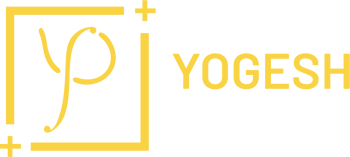Math Exploration ie. Internal Assessment (IA). Guidelines, DOs DONTs, Sample IA of our students…
What:
A written paper that explores the math behind a personal interest of your choice
Why:
- To apply and transfer skills to alternate situations, to other areas of knowledge, and to future developments
- To appreciate the moral, social, and ethical implications of Mathematics
- To appreciate the international dimensions & universality of Mathematics
- Appreciate the contribution of Mathematics to other disciples
Specifics:
- 6-12 pages
- All sources must be cited in a bibliography. Please use the subsections Works Cited, Image Sources, and definition Sources.
- Not a regurgitation of facts or a historical essay.
- The target audience is your peers. Not expected to be a formal dissertation using ostentatiousvocabulary.
- Use of mathematical technology or software is strongly encouraged.
- You are not expected to use any mathematics outside the level of this course, but you may if it iscommensurate with the level of the course.
- 20% of your IB mark
Technology:
- GeoGebra: Software for working with graphs, diagrams, functions, spreadsheets, statistics and more.
- Desmos: Software for graphing points, functions and tables.
- Equation Editor: Found in Microsoft Word and Google docs. Used for writing equations and other mathematical notation. (You may need to install this feature)
- WolframAlpha/Mathematica: Computation software
Evaluation Criterion (IMP. pls read this carefully and try to implement these points as much as possible)
A: COMMUNICATION (4 marks)
- Includes Introduction, rationale (Why did you choose this topic? Why is this topic of interest to you?), aim (What do you hope your reader will learn?), and conclusion
- Expressing ideas clearly
- Identifying a clear aim for the exploration
- Focusing on the aim and avoiding irrelevance
- Structuring ideas in a logical manner
- Editing the exploration so that it is easy to follow
- Citing references where appropriate
- Graphs, tables and diagrams should accompany the work in the appropriate place and not be attached asappendices to the document.
B: MATHEMATICAL PRESENTATION (4 marks)
- Using appropriate mathematical language and representation (notation, symbols, terminology)
- Defining key terms, where required
- Selecting appropriate mathematical tools & technology (such as graphic display calculators, screenshots, graphing software, spreadsheets, databases, drawing & word-processing software, etc)
- Expressing results to an appropriate degree of accuracy
- Use multiple forms of mathematical representation, such as formulae, diagrams, tables, charts, graphs and models, where appropriate.
C: PERSONAL ENGAGEMENT (3 marks)
- Thinking independently and/or creatively
- Asking questions, making conjectures, and investigating mathematical ideas
- Researching areas of interest
- Looking for and creating mathematical models for real-world situations
- Considering historical and global perspectives
- Demonstrating that you have “made the exploration their own”
- Expressing ideas in an individual way
- Addressing personal interest
- Presenting mathematical ideas in their own way.
- Asking and answering questions: “I wonder if…”, “What would happen if…” “Why does that happen…
D: REFLECTION (3 marks)
- Reviewing, analysing and evaluating the exploration.
- Discussing the implications of results
- Considering the significance of the exploration
- Looking at possible limitations and/or extensions
- Making links to different fields and/or areas of mathematics
- Making connections to TOK
E: USE OF MATHEMATICS (6 marks)
- Demonstrating knowledge and understanding
- Producing work that is within the level of the course.
- Applying mathematics in different contexts
- Applying problem-solving techniques
- Recognizing and explaining patterns, where appropriate
- Looking at a problem from different perspectives
- Error-free mathematics
- Mathematical sophistication
